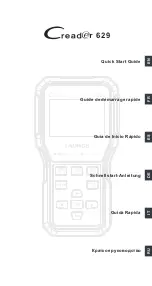
18
9. Repeat for the remaining 2400 mm luff extrusions. Use short joining sleeves only.
10. Fit the long joining sleeve (785mm) onto the wire with four-hole end oriented downwards. Then fit
the short (560mm) luff extrusion, four-hole end oriented as shown. Fit the long connecting plate in the
560mm extrusion and push the long joining sleeve upwards to hold it in position. Connect to the upper
extrusion and push up the joining sleeve. Make sure the four holes in the lower end of extrusion are
aligned with the holes in the joining sleeve.
11. Fit the two grub screws in the connecting plate with locking adhesive. This will lock the distance tube
in position. Make sure that the holes in the lower part of extrusion/joining sleeve are aligned and tighten
the screws firmly.
12. Snap on the sail feeder connector and put the sail feeder in position. Secure with the screw and tighten
moderately.
13. Fit the halyard swivel from the top and slide it down until it stops on top of the sail feeder. Then fit
the top guard and push it into the top luff extrusion until it stops. Secure it with the four pre-fitted
screws. Tighten the screws until they bottom, but do not over-tighten.
14 Fit the bearing plug halves and push them up into the long joining sleeve.
This completes the luff assembly. Next step is to fit the lower eye teminal to the stay. There are two
types of eye terminals; Stud/Eye terminal and Sta-lok eye terminal (with or without rigging screw).
Fig. 4.1.f
Fig. 4.1.g
Fig. 4.1.h
Fig. 4.1.i
NOTE! Compact-wire (Dyform®) requires a Sta-lok wedge made for this type of wire.
Seldén attaches a Compact wedge to the Compact wire pack.
















































